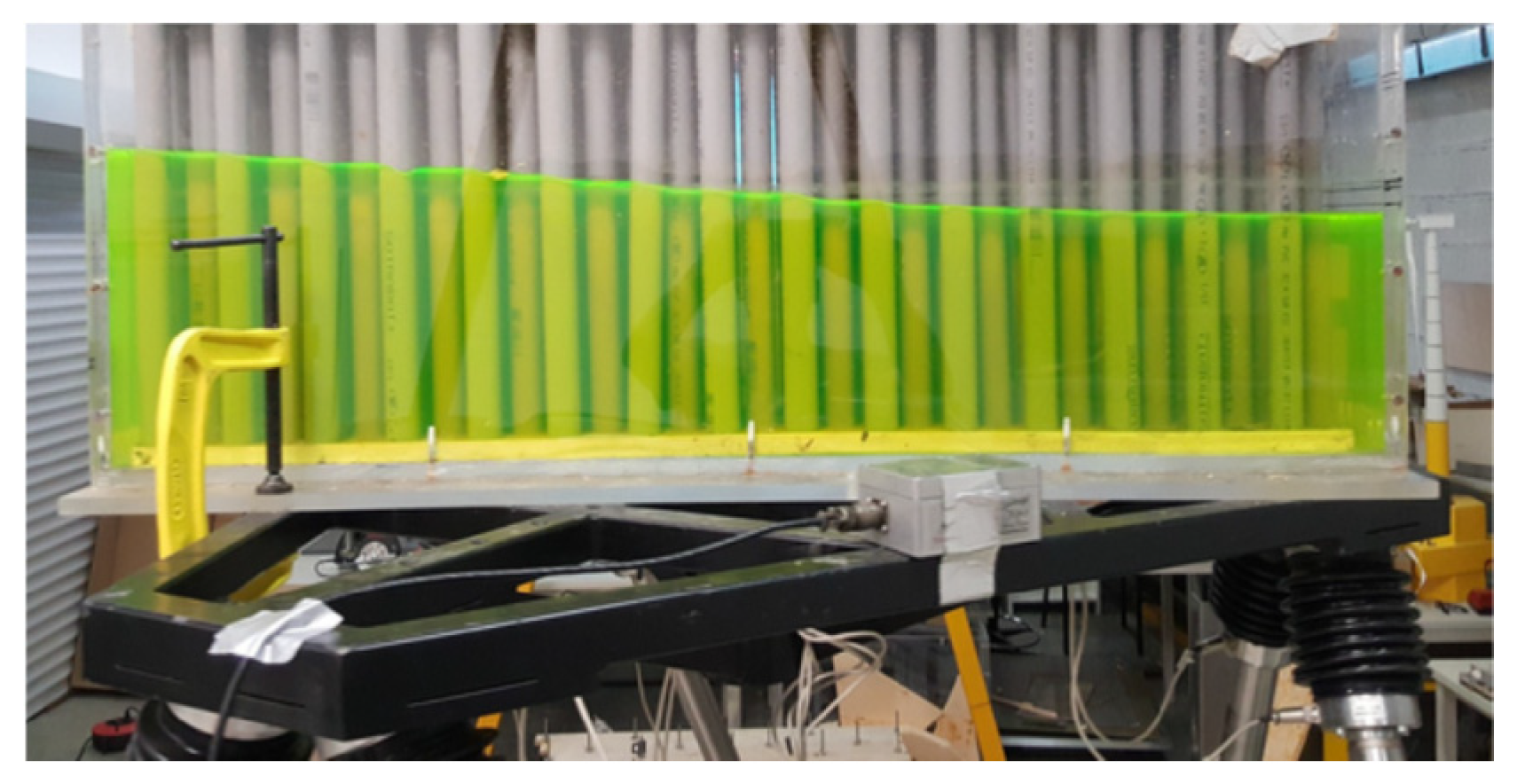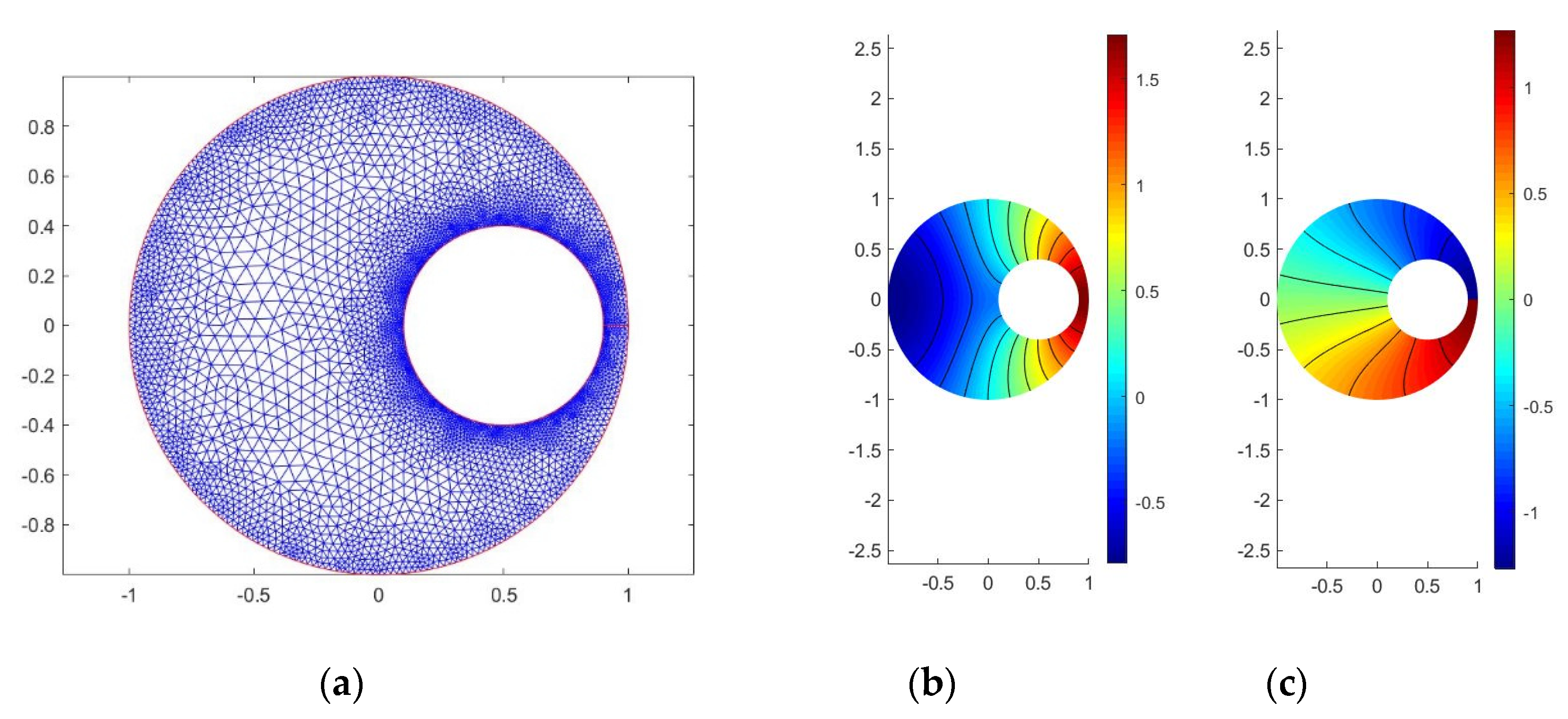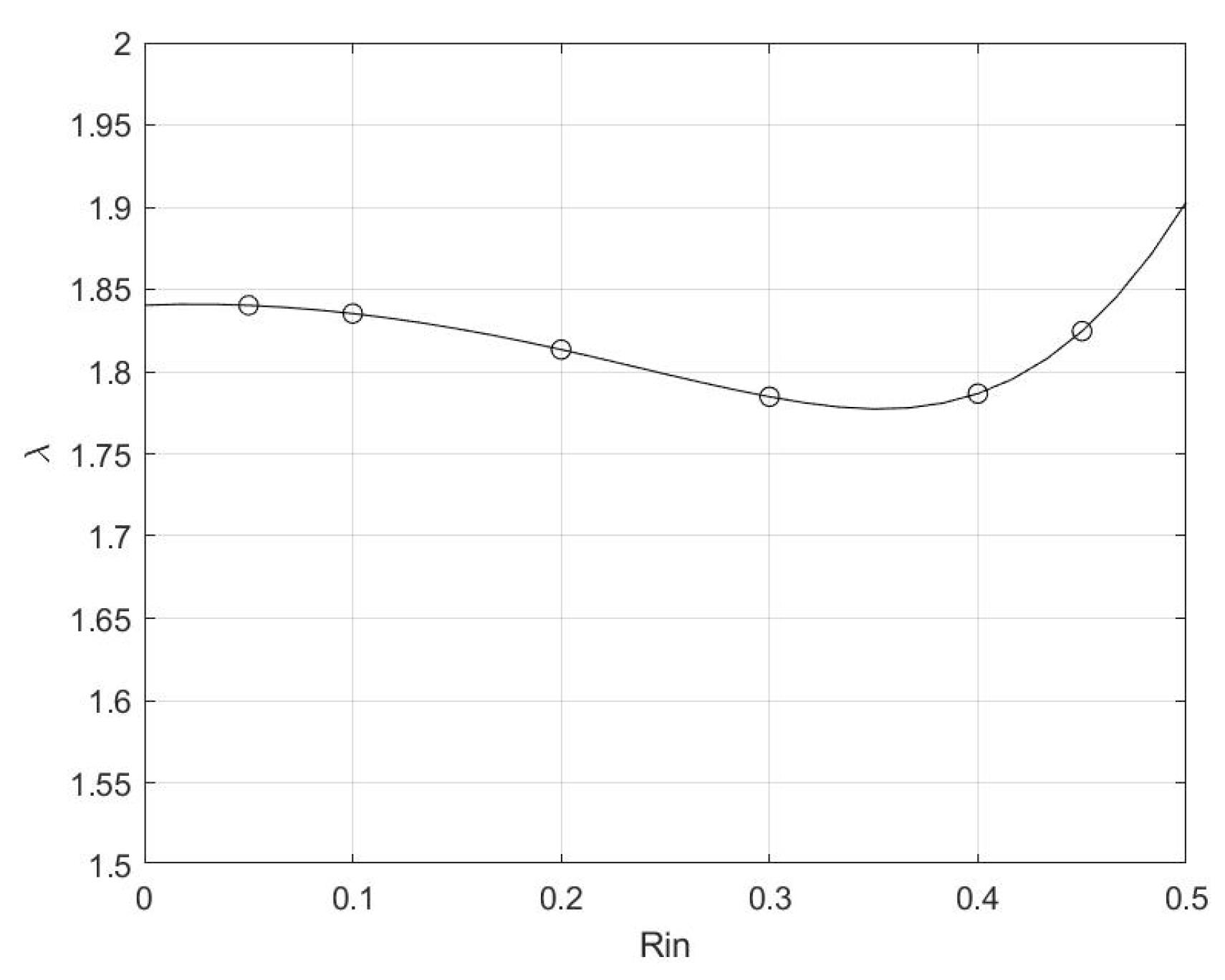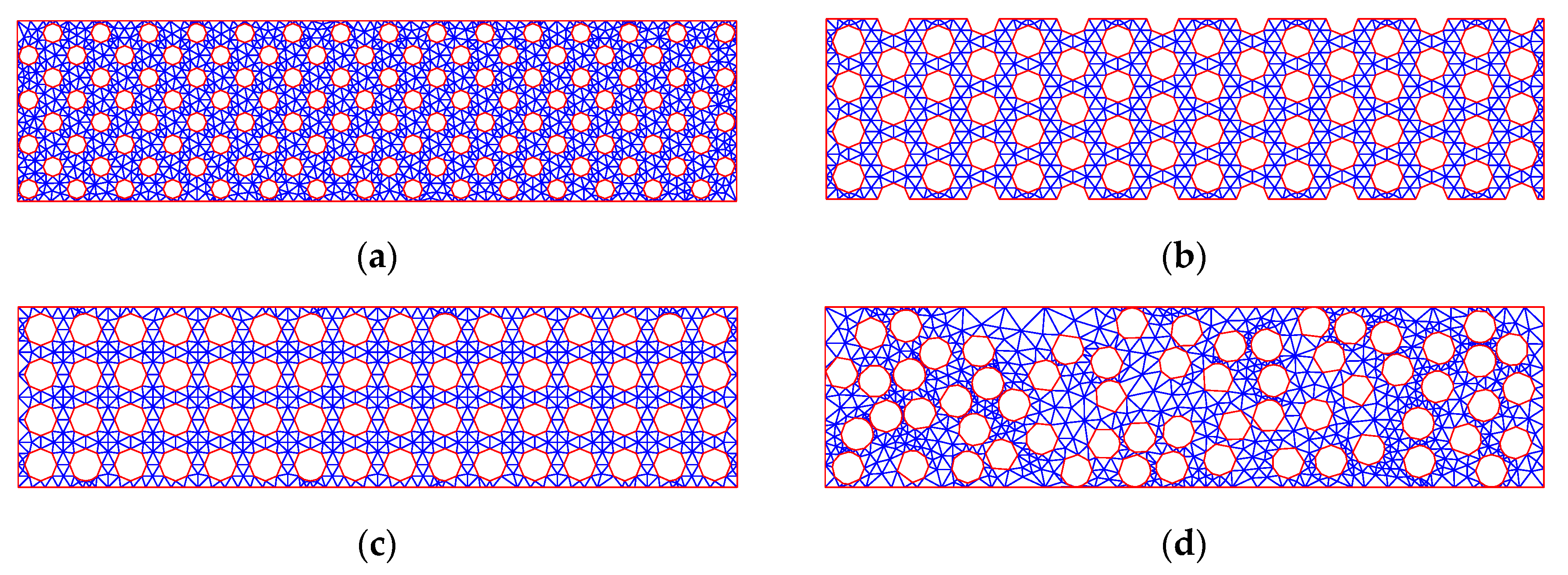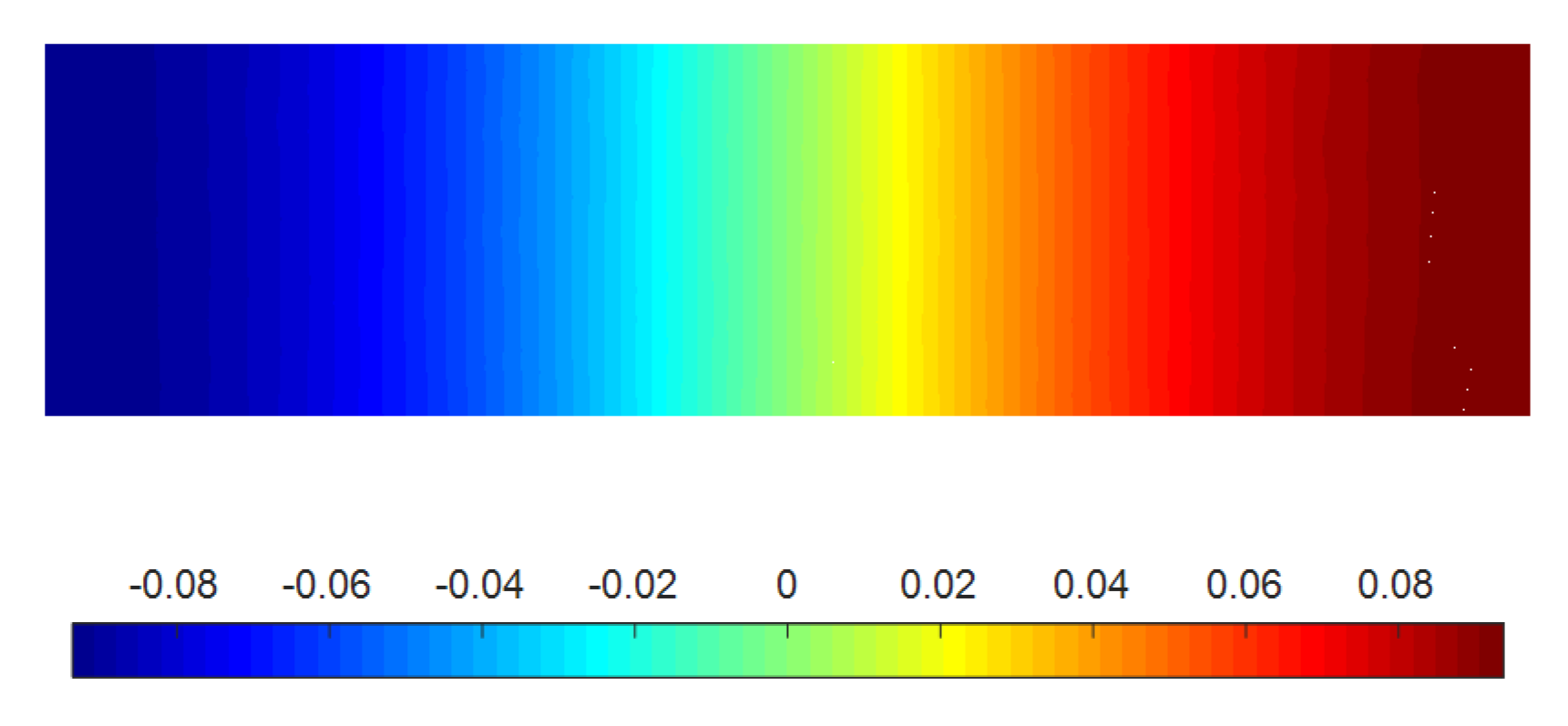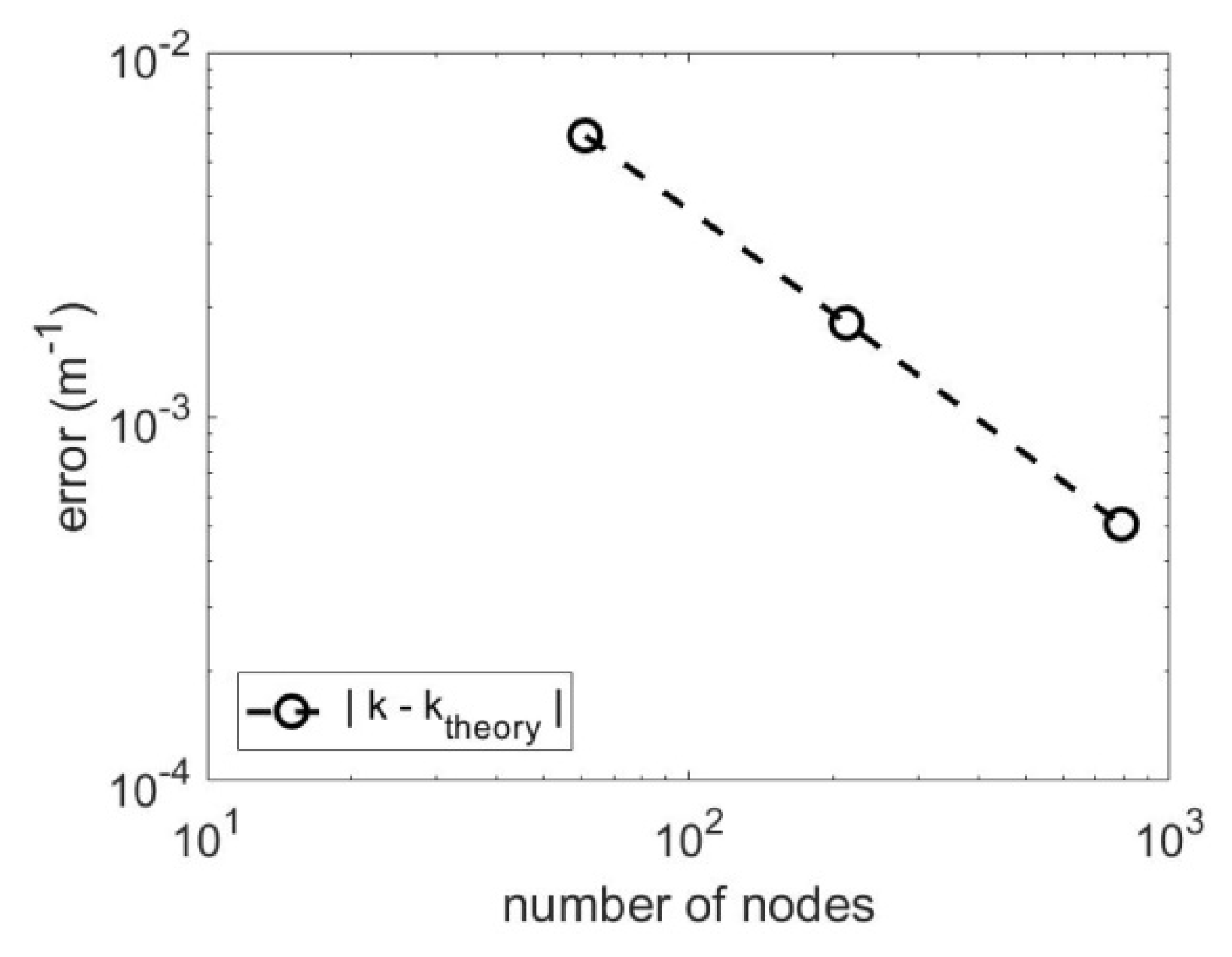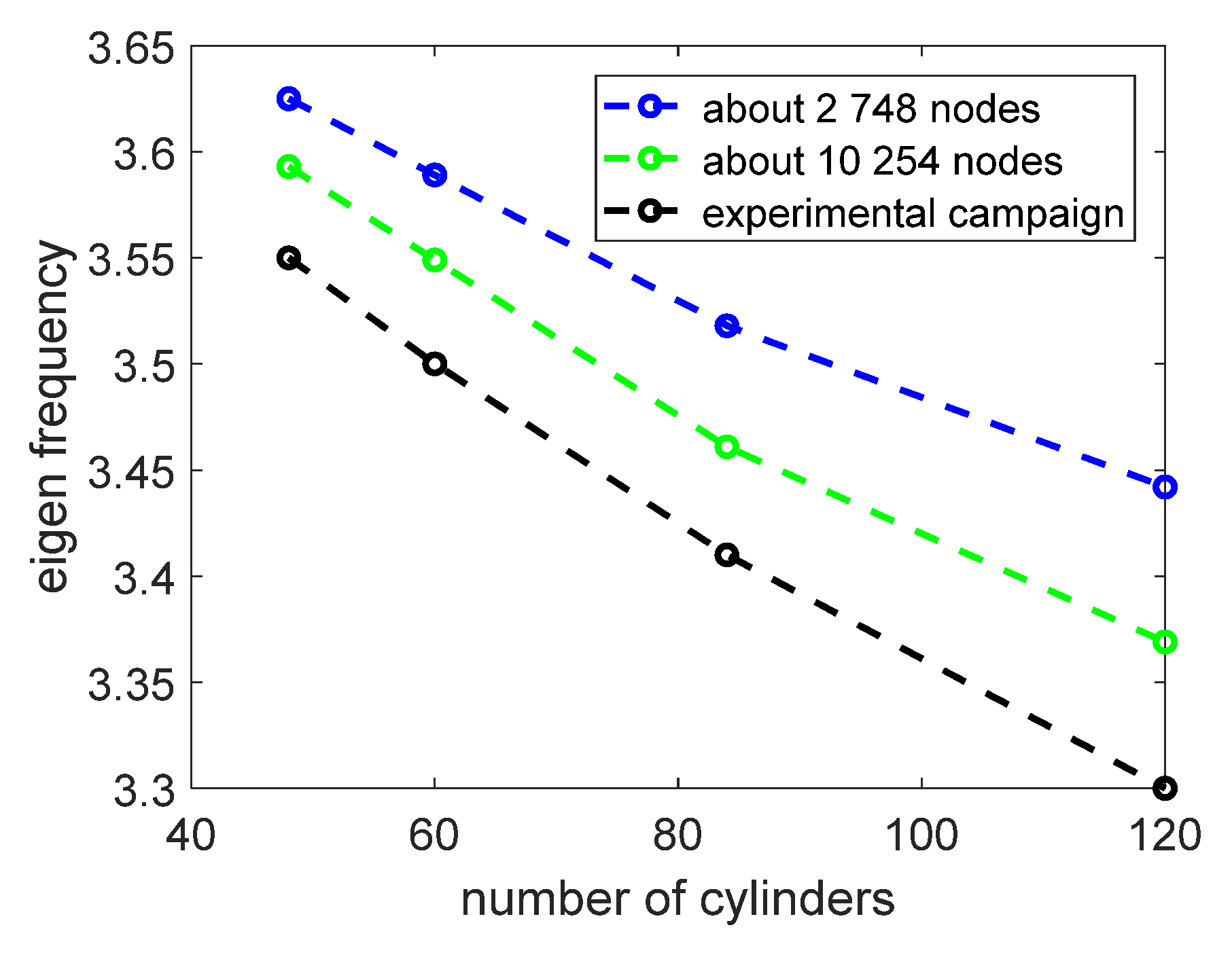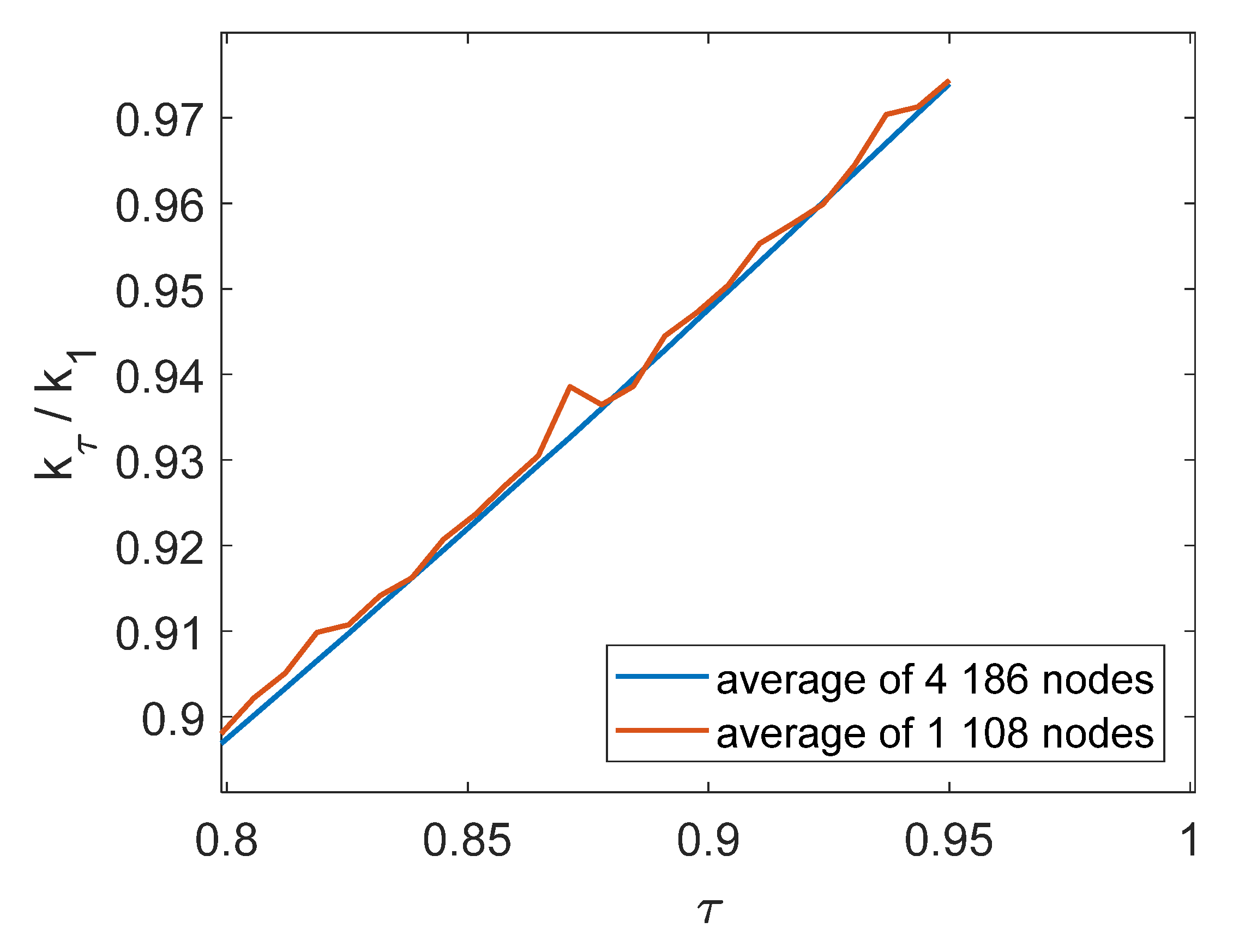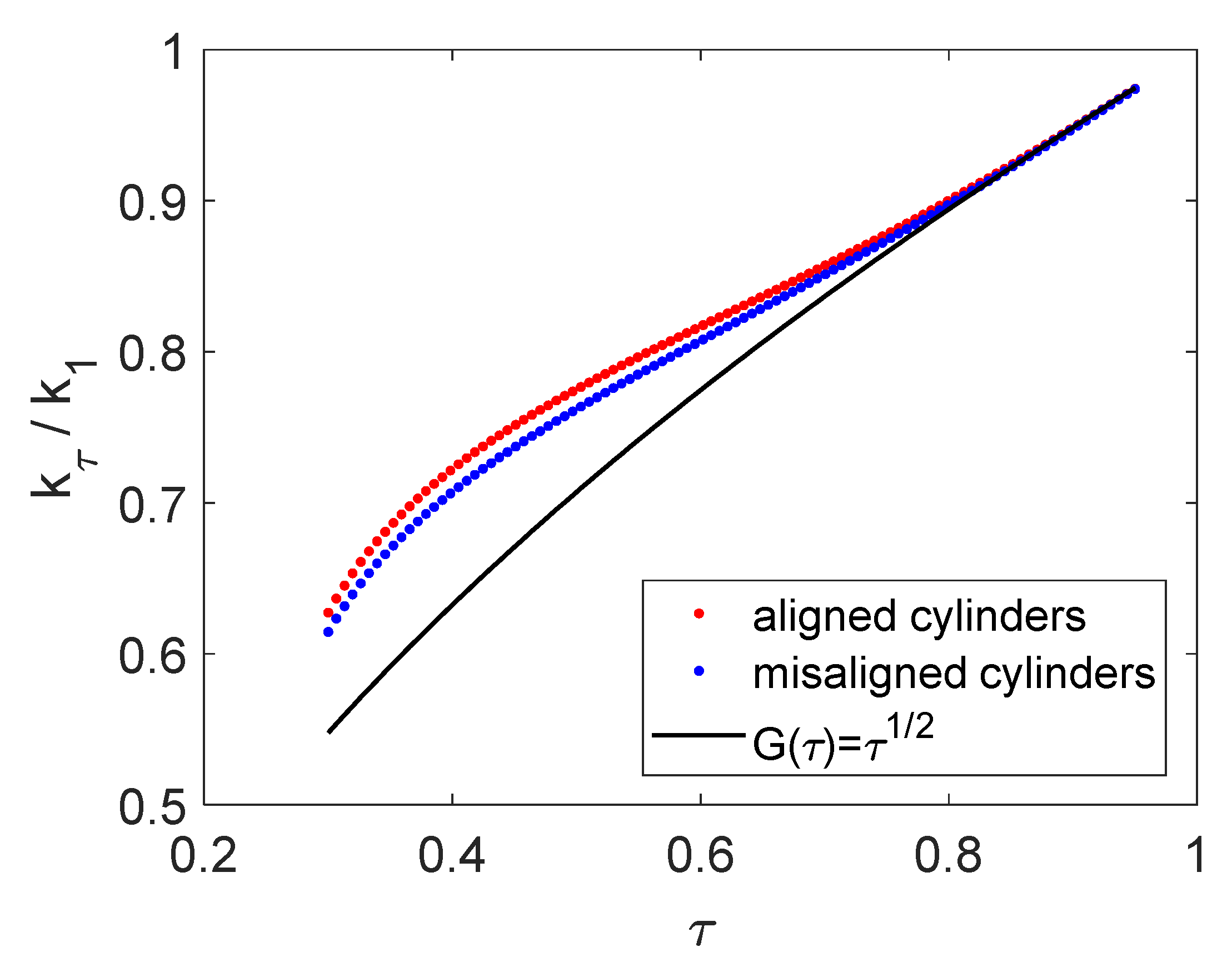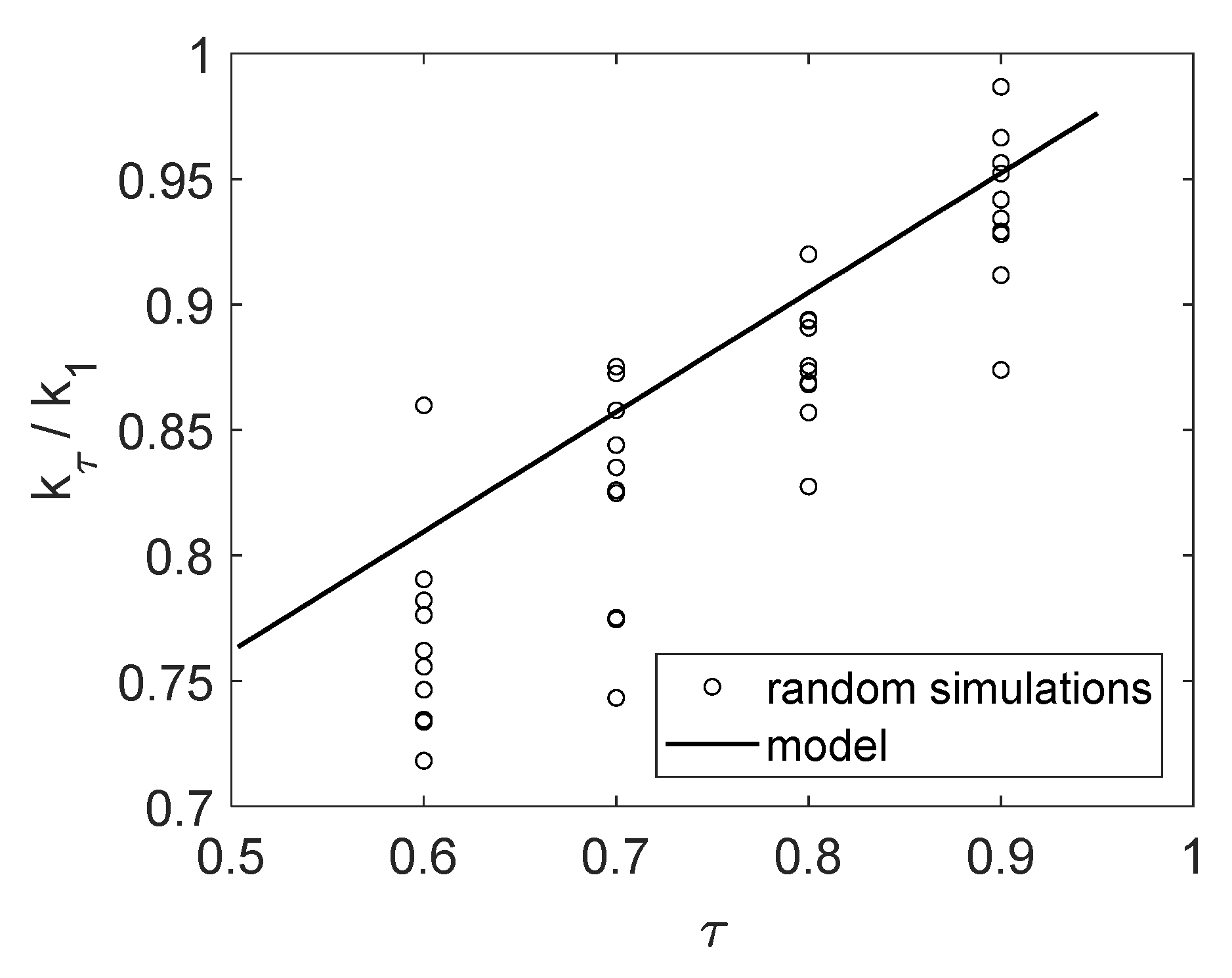1. Introduction
For many years, the scientific community dedicated significant efforts to the understanding and modeling of the wave–structure interaction; see, e.g., Mei [
1] and Molin [
2]. Among the structures, many studies are focused on cylinders, since they constitute a basic component of rigs and structures employed in ocean and coastal engineering applications. Many experimental works (e.g., Goda [
3]), mathematical models and numerical methods (e.g., John [
4], Yang and Ertekin [
5]) are developed to understand the reference problem of water waves interacting with a single, bottom mounted or floating, surface piercing, vertical cylinder; see also Young [
6], Sabunku and Calisal [
7]. A review can be found in McNatt [
8].
However, with the development of complex ocean structures, such as very large floating structures (Wang and Tay [
9]), arrays of devices for the outtake of marine renewable energies (Falnes [
10], Balitsky et al. [
11]), and for porous coastal and harbor defenses (Arnaud [
12]), the problem has been expanded to more complex geometrical configurations, where dense arrangements of vertical cylinders are involved. Similarly, there is growing interest concerning similar problems in environmental flows in vegetation, such as the propagation of water waves in mangrove forests (e.g., Massel [
13], Mei et al. [
14]).
The above configurations, of course, lead to a large increase of the difficulty, which has been addressed by using various strategies. An important body of the literature is dedicated to the study of water waves propagating through dense arrays of cylinders. If it is not possible to be exhaustive, one should emphasize the studies of Linton and Evans [
15], Maniar and Newman [
16], McIver [
17] or Kagemoto et al. [
18]; see also Belibassakis et al. [
19].
From the point of view of numerical methodology, the direct calculation of water waves through dense arrays of cylinders in complex configurations is computationally demanding. Of course, recent improvements both in computational resources and in numerical optimization techniques offer possibilities to solve this problem when the degree of complexity remains reasonable (Fu et al. [
20]). Thus, another possible approach is to rely on extensions of the potential flow theory, whereby the cylinder domain is treated as a homogeneous porous medium. The dispersion equation, though, is modified to take the extra inertial and dissipative terms into account. Such formulations, for instance, are suggested by Sollitt and Cross [
21], Madsen [
22] or Yu and Chwang [
23]. These modifications of the dispersion were used recently to model the reflection, transmission (Arnaud et al. [
24]) and diffraction (Arnaud et al. [
25]) of water through an idealized porous medium of various porosity and specific surface.
In the meantime, by implementing an experimental approach relying on the sloshing response of a tank filled with homogeneous vertical, surface piercing cylinders, Molin et al. [
26] questioned the formulation of the dispersion equation to be considered and introduced a new expression. An illustration of the tank used in the above work, which filled with a regular pattern of vertical cylinders, is presented in
Figure 1. Although the sloshing problem finds applications to engineering mechanics, the eigenvalue problem of fluid motion within tanks containing arrays of surface piercing obstacles provides also useful information for environmental maritime problems.
The present work is a numerical extension of the study by Molin et al. [
26]. The resonant sloshing in tanks with internal (sloshing-suppressing) structures has been discussed by various authors; see, e.g., Faltinsen and Timohka [
27]. Although the solution of the nonlinear problem is very important still the solution of the linearized problem provides useful information concerning the natural sloshing modes and frequencies for generalizing the method (Timohka [
28]). Since the structures (cylinders and tank walls) contain vertical boundaries the 3D problem can be reduced to 2D governed by the Helmholtz equation on the horizontal plane. An important novelty of the present approach is that it is an easily applicable method to more general shapes of tanks, with arbitrary distributions and general cross section characteristics of the structures in the tank.
A numerical solver, providing the eigenmodes of the tank, based on a finite element approach, is developed, allowing one to extend the analysis of the influence of the porosity τ of the medium (defined as the ratio of water volume in terms of the total volume of the domain) on the dispersion equation.
The paper is organized as follows. In
Section 2, the equations of the problem and the FEM numerical procedure for the solution are presented. A comparison of the tool with experiments by Molin et al. [
26] is also performed here, to provide an insight of the performance of the present model. Next,
Section 3 focuses on the analysis of the effect of porosity on the equivalent dispersion equation, or equivalently to the equivalent bulk wavenumber
of water oscillations developed in the tank. A modification of this equation is introduced. Finally, results are summarized in
Section 4, where also conclusive remarks are provided.
